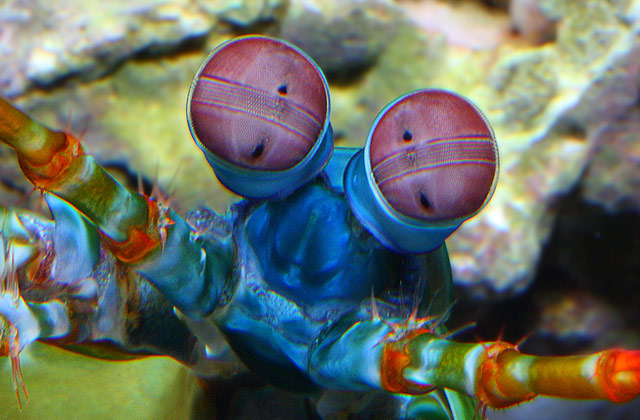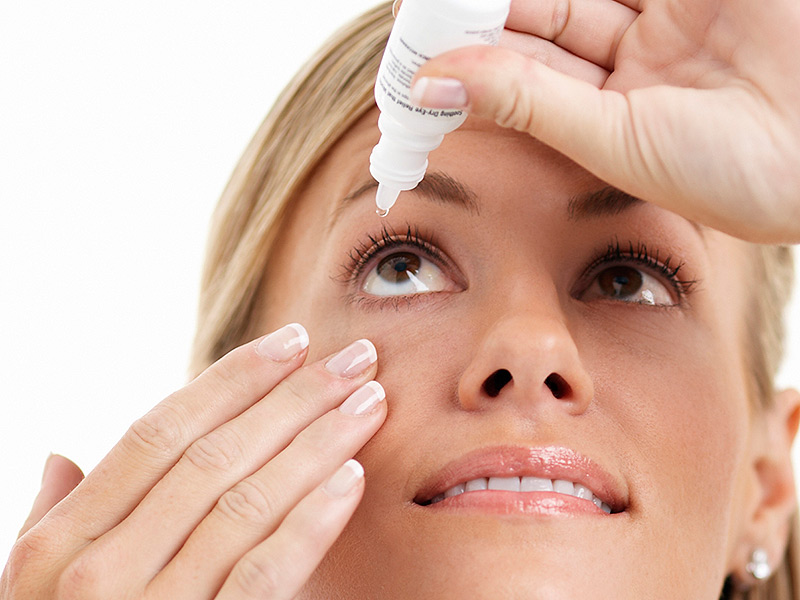Popular Blog Tags
Related Posts
- 10 Eye Jokes Just for You!
- 10 Eye Related Jokes to Brighten Your Day
- 10 Fascinating Facts about the Eye
- 10 Super Cornea Optical Jokes Just for You!
- 11 Bad Contact Lens Habits
- 12 Terrible Eye Jokes
- 13 MORE Eye Jokes Just for You!
- 13 More Eye Related Jokes to Brighten Your Day
- 13 More Super Cornea Optical Jokes Just for You!
- 2020 Most Dangerous Toys
- 4 Good Reasons for Older Adults to Have Regular Eye Exams
- 4 Reasons Your Eyelid Might Be Twitching
- 5 Reasons to Buy Glasses Locally
- 5 Reasons to Buy Your Glasses Locally
- 5 Ways to Take Care of Your Optical Assets
- 6 Activities That Can Change Your Eye Pressure
- 6 Reasons Sunglasses Are Essential
- 6 Reasons Sunglasses Are Essential
- 6 Reasons to Wear Great Sunglasses
- 7 Tips for Your Best Eye Exam
- 7 Tips for Your Next Eye Exam
- 7 Tips from an Eye Doctor on Getting the Most from Your Exam
- 9 Fascinating Facts About Green Eyes
- A Holiday Reminder
- Activities That Can Change Your Eye Pressure
- ADHD and Your Eyes
- Am I Dealing with Allergies, Dry Eye, or Infection?
- Apple of my EYE
- Are My Meds Making My Eyes Drier?
- Are My Reading Glasses Making My Eye Worse?
- Are You Asking for Trouble with Your Contacts Care Routine?
- Astigmatism is NOT a Scary Diagnosis
- Basics of Macular Degeneration
- Beauty and Brains: the science to beautiful and healthy eye make up
- Best Place to Turn for Help for a Red Eye
- Bilberry & Macular Degeneration
- Bleph Ex
- Blepharitis 101
- Bring Your Glasses to the Eye Doc...Even if You HATE Them!
- Can't Learn to Live with Those Eye Floaters?
- Cataract Surgery and Anesthesia Types
- Contact Lens Care 101
- Contact Lens Hygiene 101
- Coronavirus and Your Eyes
- Costume Contacts Can Make Halloween a Scary Time
- Dealing with Macular Degeneration
- Dealing with Macular Degeneration
- Demodex--the Mite that Lives Among Your Eyelashes
- Demodex: The Weird Little Mite Living in Your Eyelashes
- Detecting Alzheimer's Disease through the Eyes?
- Detecting Alzheimer's though an Eye Exam?
- Diabetic Eye Disease Awareness Month
- Diabetic Retinopathy Must-Knows for Everyone with Diabetes
- Diagnosis and Treatment of Diabetic Retinopathy
- Did You Know You Can Get Freckles in Your Eye?
- Differing Functions of Ophthalmologists, Optometrists, and Opticians
- Do I Even Need an Exam?
- Do I Have Eye Allergies? If So, What Can I Do?
- Do I Have the Dreaded Pink Eye?
- Do I Really Need Cataract Surgery?
- Does Your Child Have Undetected Vision Issues?
- Don't forget an eye exam on your back-to-school check list!
- Don't Play Trick or Treat with Your Eyes
- Don't worry, see HAPPY!
- DREAM VISION
- Dropless Cataract Surgery
- Dropless Cataract Surgery Is Now Available
- Dry Eye Risk Factors
- Dry Eyes or Allergies? Or Something Else?
- Eat Your Way to Better Eye Health
- Eating Your Way to Better Eye Health
- Explosion in Fireworks Eye Injuries
- Eye Allergies and You
- Eye Anatomy Crossword Puzzle
- Eye Care Center is Moving to College Station / TowerPoint
- EYE Carumba! It's Cinco de Mayo.. AND healthy vision month!
- Eye Jokes--Our Gift to You!
- Eye Jokes--Our Holiday Gift to You!
- Eye Liner, Shadow, and Your Dry Eyes
- Eye Opening Advice for Using Eye Drops
- Eye Problems Associated with Lyme Disease
- Eye Safety During the Holidays
- Eye Safety for the Upcoming Solar Eclipse
- Eye'mmmm back with Cataract Awareness Month!
- Familiar with the 20-20-20 Rule?
- Feel like you're out of dry eye options? Punctal Plugs may be for you!
- Geriatric Eyes
- Giving the Gift of Sight
- Glasses=Need, Contacts=Luxury.
- Glaucoma & Sleep Apnea
- Had LASIK? Get a Copy of Your Eye Records ASAP!
- Happy Fall, Y'all!!!
- Health or Vision Insurance?
- Hearing That Your Driving Days Are Over
- Help for Those with Low Vision
- Help Your Child See Their Way to a Better School Year
- Help! Is My Eye Bleeding?
- Help! Growing Older and Can No Longer Read with My Contacts!
- Help! I started seeing these floating things!
- Hereditary Eye Diseases
- Holiday Eye Safety
- How Many of These Bad Contact Lens Habits Are You Guilty Of?
- How Shingles Can Affect Your Eye
- How to Deal with Your Scary Red Eye
- How to Give the Gift of Sight
- How to Make Your Red Eyes Redder
- How to Make Your Red Eyes Worse
- How to Ruin a Fun Day in the Water in One Easy Step
- How We Test Your Eye Pressure
- Hurricane Harvey Office Notifications
- Hybrid Contacts: The best of both worlds
- I Should Pay Out-of-Pocket for Cataract Surgery Now?
- I Think My Reading Glasses Made My Eyes Worse!
- I'm 45 and My Contacts No Longer Work for Me!
- I'm seeing jagged lines in my vision! Help!
- If You've Had LASIK, Get Your Eye Records NOW!
- In a Flash...Your Eyes & Fireworks Injuries
- Intraoperative Aberrometry & Cataract Lens Replacement Selection
- Is an Eye Exam on Your Back-to-School Checklist?
- Is Coffee Good or Bad for My Eyes?
- Is It a Drug Allergy or a Side Effect?
- Is My Coffee Addiction Bad for My Eyes?
- Just Found Out I Have Primary Open Angle Glaucoma. What Now?
- Keeping Your Glasses in Working Order
- Know the 3 F's of Retinal Detachments
- Love Is in the Air...or Eyes
- Macular Degeneration & Bilberry
- Macular Degeneration 101
- Macular Degeneration--What Can Be Done?
- Macular Degeneration, Cataracts, and You
- Minimally Invasive Glaucoma Surgery
- MODO FRAMES to your Service!
- Mom's Eyes
- My Eyeballs Can Get Wrinkles, Too?
- My Eyes Feel Like a Desert!
- My Eyes Feel Like the Sahara!
- My Eyes Feel Like the Sahara!
- My New Glasses Are Too Strong!
- My New Glasses Aren't Working for Me
- Neuro Lens - Part 1
- Neuro Lens - Part 2
- Ophthalmologists, Optometrists, Opticians - What's the Difference?
- Optical Jokes--Our Holiday Gift to You!
- Optical Jokes: Our Gift to You!
- Options for Vision Correction While Playing Sports
- Parkinson's & Your Eyes
- Poppin' Bottles....Not Eyes
- Pregnancy and Your Eyes
- Pregnancy Can Change Your Eyes
- Problems with your contact lenses?!
- Put your BEST Frame forward!
- Redness got you down!?
- Retinal Detachment - Symptoms, Causes, and Treatment
- Rheumatoid Arthritis, Hydroxychloroquine, and Your Eyes
- Science and a Mother's Eyes
- Screen Time & Your Eyes
- Should I Be Scared of My Astigmatism Diagnosis?
- Should These Flashes & Floaters Worry Me?
- Sinus pressure weighing you and your frames down?!
- Sports and Eye Injuries
- Sports and Eye Injuries
- Sports and Vision Correction
- STOP Fishing Mucous out of Your Eyes!
- Sunglasses in the Winter?
- Taking Care of Your Child's Eyes
- Texting and Driving = Bad Idea
- The 3 F's--and Why They Can Be So Dangerous
- The Benefits of Daily Disposables
- The best eyes on the planet!
- The best foods for eye health!
- The Biggest Scare of All
- The Care & Cleaning of Your Glasses
- The Hallmark Sign of Ocular Allergies
- The Importance of Knowing if it Was a Side Effect or a True Allergy
- The Importance of Quality Sunglasses
- The Leading Cause of Blindness in Working-Age Adults
- The Link Between Sleep Apnea and Glaucoma
- The Lowdown on Low Vision
- The Perfect Frame for You!
- The Power of a Mother's Eyes
- The Scary Cost of Cheap Costume Lenses
- The Wonderful World of Dailies
- The World of Eye Color
- There's Blood in the Back of My Eye?!
- These weird spots and jagged lines are scaring me!
- Things That Make Your Eye Twitch
- Think of Them as Sunscreen for Your Eyes
- Time to Hang Up the Keys?
- Time to Hang Up the Keys?
- Tips for Making Those New Glasses Last
- Top 4 Reasons Every Older Adult Needs Regular Eye Exams
- Transitions Contact Lenses
- Try saying Intraoperative Aberrometry 3 Times Fast!
- Two Common Eye Diseases with a Genetic Link
- Two Common Genetic Eye Diseases
- Vision Hallucinations and Charles Bonnet Syndrome
- Vision or Health Insurance?
- Vision Problems After a Concussion or TBI?
- Vision Problems Following Concussion
- Visual Hallucinations? It Could Be Charles Bonnet Syndrome.
- Want to Know How to Make Your Red Eyes Redder?
- Ways Eyes Can Change During Pregnancy
- We Are Open Today w/ Normal Hours
- We have MOVED into Tower Point
- Welcome to Our Redesigned Site
- What 20/20 Vision Actually Means
- What About Cataract Surgery with My Macular Degeneration?
- What Anesthesia Might You Have for Cataract Surgery?
- What Are Retina Wrinkles?
- What Are These Floating Things?
- What Happened to Those Dilation Reversal Drops?
- What Is 20/20 Vision?
- What Is a Punctal Plug and Why Would I Need One for My Eyes?
- What Is a Punctal Plug?
- What Is a Retinal Vein Occlusion?
- What is Diabetic Retinopathy?
- What Is Low Vision and How Is It Treated?
- What Is Mucus Fishing Syndrome?
- What is POAG, or Primary Open Angle Glaucoma?
- What Is Refraction & Why Doesn't Health Insurance Cover It?
- What Is Refraction & Why Doesn't My Health Insurance Cover It?
- What Is the Deal with Those Weird Cataract Glasses?
- What Is This Bump on My Eyelid?
- What makes a 'Progressive' Lens Progressive?
- What Sunglasses Can Do for You
- What Tests Might I Have During My Eye Exam?
- What Tests Might You Have During Your Eye Exam?
- What to Do About Those Pesky Floaters
- What to Know Before Your First Eye Injection
- What to Know Before Your First Eye Injection
- What You Should Know About Intraoperative Aberrometry Before Your Cataract Surgery
- What You Should Know About MIGS (Minimally Invasive Glaucoma Surgery)
- What's a retinal detachment and what are the symptoms?
- When Do You NEED Cataract Surgery?
- When Your Retina Gets a Wrinkle
- Why a Progressive Lens Might Be Your Best Choice
- Why Are My Eyes Changing Color?
- Why Are My Eyes Red?
- Why Are They Saying I Need to Pay Out-of-Pocket for Cataract Surgery?
- Why Dilation Reversal Drops Are Not Currently an Option
- Why Do I Need an Eye Exam When I Can See Great?
- Why Do You Have to Touch My Eye or Puff It with Air?
- Why Frequent Eye Exams Are a MUST If You Take Hydroxychloroquine (Plaquenil)
- Why Get an Early Eye Exam for Your Young Child?
- Why Good Sunglasses are a Great Investment
- Why Having Astigmatism Isn't Usually That Big a Deal
- Why is there Blood in the Back of My Eye?
- Why Polarized Glasses Are Essential in Winter
- Why Rubbing Your Eyes Is a Mistake
- Why Should I Know What Intraoperative Aberrometry Is?
- Why Those Cheap Halloween Costume Lenses Aren't Worth the Cost
- Why You Shouldn't Try to Get By with Just Contact Lenses
- Why Your Child NEEDS an Eye Exam
- Winter Is Prime Time for Polarized Sunglasses!
- You Want to Do WHAT to My Eye? Part 1
- You Want to Do WHAT to My Eye? Part 2
- You Want to Inject My Eye? Part 1
- You Want to Inject My Eye? Part 2
- You're Welcome to WALK-IN
- Your Child & Your Eye Doctor
- Your Child's Eyes & ADHD
- Your Eye & Shingles
- Your Eyes + Lyme Disease
- Your Vision & Parkinson's Disease
Need help finding something?
Office Location & Hours
903 William D. Fitch Pkwy
College Station, TX 77845
Phone Number: (979) 779-9000
Fax Number: (979) 690-1510
Mon, Tue, Thu, Fri:
Wednesday:
8am - 5:30pm
9am - 5:30pm



















